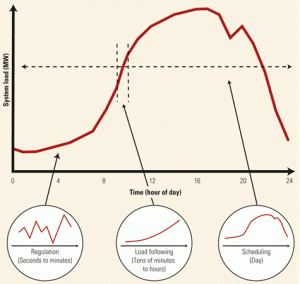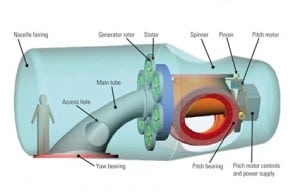-
Wind
Unique challenges face wind power developers, buyers
Utility resource planners are used to viewing new generation in terms of firm, dispatchable capacity. Dispatching a renewable resource such as wind requires a different perspective. Wind capacity can serve as a hedge against fossil fuel price risks and perhaps future emissions restrictions, but it requires a much more structured planning horizon. Integrating wind farms into their portfolios may be the most difficult challenge utilities face today.
-
Gas
Wind farmers: Heed the lessons of the merchant gas-power business
The wind energy business is beginning to look as frenetic as the merchant gas-fired power business in the late 1990s—with some critical differences. If the 10 issues listed here are addressed soon, wind power may avoid a crash and burn similar to the one that beset the gas turbine business.
-
Hydro
Osmotic power from the ocean
In chemistry, osmosis refers to the movement of water molecules through a selective membrane from an area of low solute concentration to an area of high solute concentration, creating a pressure gradient. Researchers have recently demonstrated that exploiting this natural phenomenon could produce useful amounts of electrical power.
-
Coal
Expert systems optimize boiler performance, extend plant life
Slagging and fouling of furnaces and boilers’ convective pass top the list of costly coal plant O&M problems. Although sootblowing is a tried and true solution, running sootblowers too often can erode boiler tubes. Lehigh University’s Energy Research Center has developed an "expert" sootblowing system that has outperformed experienced operators’ "seat of their pants" sootblowing procedures on two head-to-head field tests.
-
Coal
Utilities split on readiness of IGCC
For some gencos, the dearth of operating experience for integrated gasification combined-cycle plants adds too much uncertainty to the risk/reward equation for new-capacity technology options. For others, the possibility of being able to comply with air pollution limits as far out as 2018, as well as to meet all-but-certain CO2 caps, makes IGCC well worth investing in—now.
-
Coal
Technology options for capturing CO2
Concerns about global climate change have prompted interest in reducing or eliminating the carbon dioxide (CO2) emissions of fossil fuel-fired power plants. Here’s a guide to the technology and economics of three CO2 capture methods: postcombustion separation of CO2 from flue gas (applicable to existing plants), and oxygen-fired combustion and precombustion capture (suitable for new coal-fired capacity, including IGCC plants).
-
O&M
Meeting utility industry challenges through innovation
In 2005, Xcel Energy fully implemented its unique Utility Innovations initiative to encourage its IT vendors to work together. One pilot project completed under the UI umbrella confirmed that tighter integration of predictive and analytical systems and data can optimize preventive maintenance intervals, reducing costs and downtime while increasing profits and productivity.
-
O&M
Monitoring key gases in insulating oil keeps transformers healthy
Large T&D-sized transformers age as quickly as generating assets do. But preventing transformers from failing is difficult because they have no moving parts and are sealed up. Tracking the concentrations of certain gases—the more, the better—that are dissolved in a unit’s insulating oil is a proven way of detecting damage before it causes a costly problem.
-
Business
Shaving load peaks from the substation
The first megawatt-class sodium sulfur (NaS) battery placed in service in North America was installed this June in Charleston, W.Va. The 1.2-MW system—comprising the battery and a bidirectional inverter—can be discharged during the day to provide 7.2 MWh of on-demand power for shaving peak loads and be recharged at night. It’s no longer true that electricity can’t be stored, except in small quantities.
-
Commentary
Turning the corner on global warming
In his keynote speech this May to the Global Roundtable on Climate Change, held in Iceland and hosted by the Earth Institute of Columbia University, Ólafur Ragnar Grimsson—the president of Iceland—challenged government and business leaders to take measurable steps now to build a prosperous and sustainable future through smart science and public policy. Grimsson’s call […]
Search











